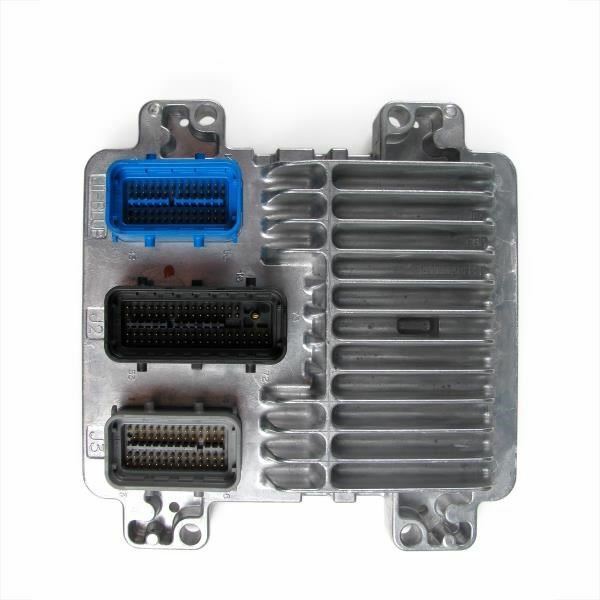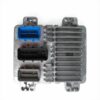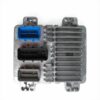Bring Your Truck Back to Life
Is your GMC Canyon or Chevy Colorado suddenly acting possessed? Stalling at red lights, shifting erratically, or refusing to start altogether? These frustrating and often unpredictable issues frequently point to a failing Powertrain Control Module (PCM), the central computer of your vehicle. When the brain of your truck is on the fritz, it can feel like you’ve lost the reliable workhorse you depend on. This isn’t just an inconvenience; it’s a matter of safety and peace of mind. We’re here to provide a straightforward, dependable solution that gets you back on the road with confidence.
This replacement PCM is meticulously prepared for your specific vehicle. We flash it with the latest GM-certified software updates using the VIN you provide during checkout. This critical step ensures that the module communicates flawlessly with your truck’s existing systems—the engine, transmission, ABS, and more—right out of the box. No complicated trips to the dealership for expensive programming are necessary. This is a direct-fit, plug-and-play solution designed to restore your truck’s original performance and reliability.
Warning Signs Your PCM is Failing
A faulty engine computer can manifest in numerous ways, from subtle annoyances to critical failures. If you’re experiencing any of the following, it’s a strong indicator that your PCM may be the culprit. Replacing it can resolve these persistent issues and prevent further damage to other components.
- ✔ Check Engine Light: The light is on, and you may have codes like P0601, P0606, or other communication-related DTCs.
- ✔ Erratic Engine Performance: Unexplained stalling, rough idling, misfires, or a sudden drop in fuel economy.
- ✔ Transmission Problems: Harsh or delayed shifting, or getting stuck in a single gear (limp mode).
- ✔ No-Start Condition: The engine cranks but won’t start, or there’s no communication with your scan tool.
- ✔ Intermittent Electrical Issues: Gauges behaving strangely or other electronic components acting up without a clear cause.
From the Mechanic’s Bay: The Phantom Misfire
A customer brought in his ’05 Colorado with a persistent, random misfire that no one could solve. He’d already replaced plugs, coils, and even injectors. The truck would run fine for days, then suddenly start bucking and stumbling. After checking all the wiring, we hooked up a scope to the injector drivers at the PCM. Sure enough, we saw the signal for cylinder 3 just drop out intermittently. A new, properly programmed PCM fixed it instantly. It’s a perfect example of how the computer itself can be the source of the most maddening mechanical-seeming problems.
Effortless Steps for a Confident Fix
Installing your new 2004-2006 Canyon PCM is a manageable job for a DIYer with basic tools. Following these steps will ensure a smooth process. Remember to always disconnect the battery first for safety.
- Disconnect the Battery: Use a wrench to loosen and remove the negative battery terminal. This prevents any electrical shorts during the installation.
- Locate the PCM: On these trucks, the PCM is typically located on the right-hand (passenger) side of the firewall in the engine bay.
- Unplug the Connectors: Carefully disengage the locking tabs on the electrical harness connectors and pull them straight out from the module. Avoid forcing them.
- Remove the Old Module: Unbolt the PCM from its mounting bracket. It’s usually held in by a few small bolts.
- Install the New PCM: Mount your new, pre-programmed module in place and tighten the bolts. Reconnect the electrical harnesses, ensuring they click securely into place.
- Reconnect the Battery: Re-attach the negative battery terminal and tighten it.
- Perform Security Relearn: You will need to perform a simple key-relearn procedure to sync your vehicle’s anti-theft system with the new PCM. This typically involves turning the key to the ‘ON’ position for 10-15 minutes, then off, and repeating two more times before starting the engine.
Tailored Fit For Your Ride
This module is a direct replacement for a wide range of GM trucks and SUVs, ensuring broad compatibility. Please verify your vehicle is on the list below. This is the correct 2004-2006 Canyon PCM and also fits these other models:
- GMC Canyon: 2004, 2005, 2006
- Chevrolet Colorado: 2004, 2005, 2006
- Hummer H3: 2006
- Buick Rainier: 2006 (4.2L)
- Chevrolet Trailblazer & Trailblazer EXT: 2006 (4.2L)
- GMC Envoy & Envoy XL: 2006 (4.2L)
- Isuzu Ascender: 2006 (4.2L)
- Isuzu i-280 & i-350: 2006
- Saab 9-7x: 2006 (6 cylinder)
This part replaces numerous original part numbers, including: 12569773, 12588650, 12589311, 12591647, 12596783, 12597521, 12604438, and more.
Frequently Asked Questions
Do I need to get this programmed by a dealer?
No. We program the module to your vehicle’s specific VIN before shipping it. This means it’s ready for installation and a simple key relearn procedure right out of the box, saving you time and money.
What is a ‘key relearn’ and is it difficult?
A key relearn, or security relearn, syncs the new PCM with your vehicle’s anti-theft system. It’s very simple and requires no tools. The standard procedure is to turn the key to the ‘ON’ position for about 10 minutes (until the security light goes out), turn it off for 5 seconds, and repeat this cycle three times. After the third cycle, the vehicle should start.
Where do I provide my VIN?
You can enter your 17-digit VIN during the checkout process or send it to us in a message after placing your order. We cannot ship your part until we have this information to ensure correct programming.
Will this fix my check engine light?
If the check engine light is caused by a faulty PCM (common codes include P0601-P0606), then yes, this replacement will resolve the issue. However, if the light is on due to other failing sensors or components, those issues will still need to be addressed.
Is this a guaranteed fix for my transmission shifting problems?
The PCM controls transmission shift points, so a failing module is a very common cause of erratic shifting, slipping, or being stuck in gear. While this part often resolves those issues, it’s important to ensure the transmission fluid is clean and at the correct level, and that there are no internal mechanical failures.


